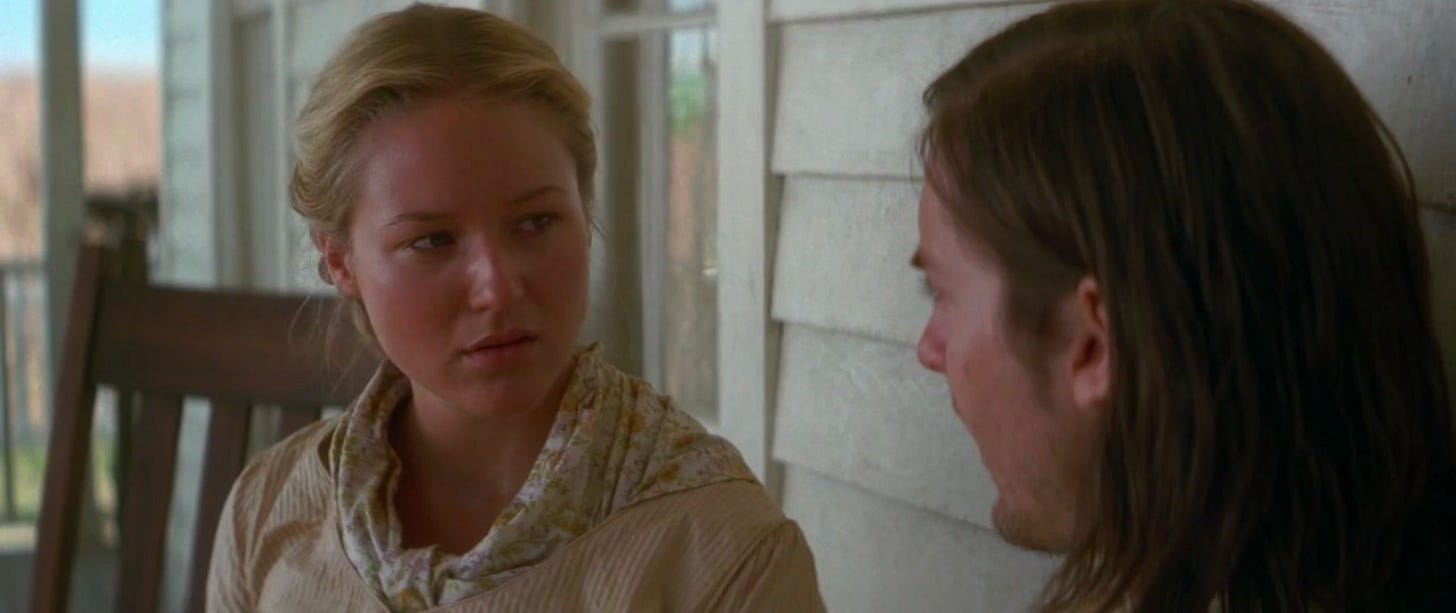Aspect Ratio in LUST, CAUTION
Ang Lee's preferred frame for literally and figuratively centering character expressions
A taller frame has been Lee's insistence since he clearly disliked certain limitations of Ride with the Devil’s 2.35:1 aspect ratio.
A more square frame arguably works better for Lust, Caution than, for example, Brokeback Mountain with its wide open ranges, but specifically what it enables is Lee dwelling on closeups of individuals amongst groups, keeping them singular while making it clear they're surrounded.
In group scenes, Lee can establish how the group is oriented, then single out ‘major players’ to allow - almost force - us to focus on them, as their face fills most of the screen:


To get this effect in a wider aspect ratio you have to come awkwardly close and cut actors off below the chin to get them to ‘fill’ the frame as much top-to-bottom, which is what happened in Ride with the Devil:
Back to Lust, Caution.
A second benefit in terms of what Lee wants is: medium shots have more room for people to be higher/lower than each other to demonstrate power dynamics, as in the group mahjong shot above. He also uses this in two-person scenes:


Lee clearly likes seeing faces up close, body language in medium shots and closeups, and singling out individuals even in shots which also contain a group, and wants to accomplish this without the shot itself being very wide at all.
Finally, for reaction shots from other characters, the height of the frame allows Lee to give us a two-for-one, and we can ‘read’ their animation through body language as much as facial expression or what they’re saying.
Lee continually chooses aspect ratios which allow him to frame characters in ways he prefers, whether that works as well for landscapes or setpieces or not, and even when much conventional wisdom would push towards wider screens for historical epics, cowboys roaming mountains, etc.
Aspect ratio choices are impacted by everything from technology, to final ideal release platform, to personal preference, to the artist’s intended ‘forced perspective’. You can like it or loathe it, but Ang Lee knows what he wants.










